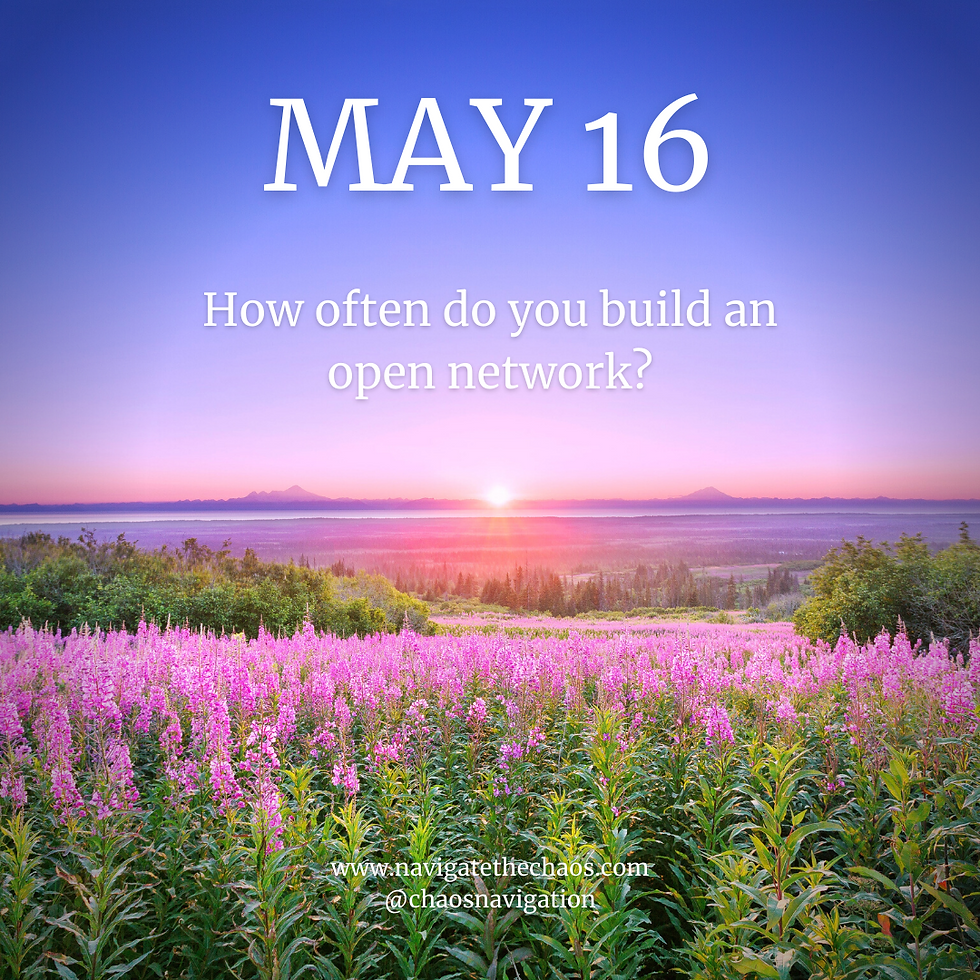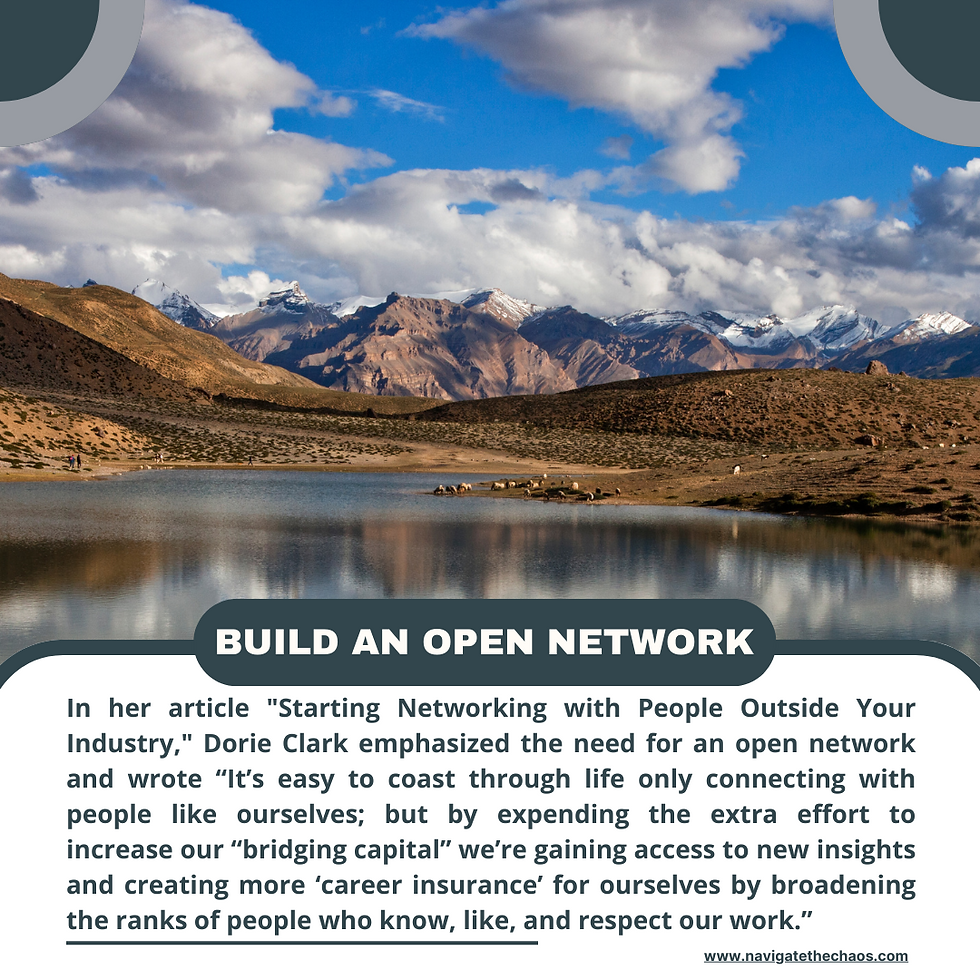How often do you build an open network?
- Michael Edmondson, Ph.D.

- May 16, 2024
- 3 min read

Today is May 16 and the Navigate the Chaos question to consider is “how often do you build an open network?” The adage “it’s not what you know, it’s who you know” is true; but there is a caveat. The “who you know” needs to be outside of the circles frequently traveled. Just being connected, or having many LinkedIn contacts, fails to provide the necessary level of engagement often required to succeed in today’s ever-changing global marketplace. You may know hundreds of people, but if they are all working for the same organization, you need to ask yourself if that is the best way to network. For today’s reflection, the short answer is no, it is not.
There are two types of networks: open and closed. An open network involves knowing people from outside of your field, industry, or geographical location. The greater the diversity of your contacts, the more open your network is. Conversely, a closed network is where most of your contacts are in your organization, industry, or location. A closed network provides little opportunity to expand your interests, gain a new perspective, or gain first-hand knowledge of new fields. Those who navigate the chaos and practicing the art of living well understand the benefits of identifying, building, and maintaining open networks throughout one’s career.
Research from network science shows that being the most connected person is not an effective way to build a network. According to the latest research, simply being in an open network instead of a closed one is the best predictor of career success. Most people spend their careers in closed networks; networks of people who already know each other. The value of open networks has been confirmed through research. For example, in 2013, bestselling author Michael Simmons interviewed Ronald Burt, one of the world’s top network scientists. He asked him about the number one best predictor of career success. Burt's response? An open network.
People often stay in the same industry, the same religion, and the same political party. In a closed network, it is easier to get things done because you have built up trust, and you know all the shorthand terms and unspoken rules. It is comfortable because the group converges on the same ways of seeing the world that confirm your own. But is remaining in a closed network for extended periods of time healthy when it comes to understanding difference?
Successful people intentionally work on engaging with those they have yet to connect with or those less connected. People with ties to the less connected are more likely to hear about new ideas and can piece together opportunities in ways that less effectively networked colleagues cannot. People who actively build open networks are also exposed to different types of ideas, people, and cultures. Navigating the chaos will probably require you to talk to people from outside your closed network so practice building your open network and create new learning opportunities, experiences, and situations for yourself.

By staying in the same network for extended periods of time you risk being exposed to groupthink. If you are exposed to groupthink for too long you jeopardize losing the ability to think for yourself and are often not exposed to diverse perspectives and points of view.
As Harvard sociologist Robert Putnam has written, you need to have a balance of both “bonding capital” and “bridging capital” — i.e., relationships based respectively on your commonalities (bonding) and relationships built across differences (bridging). Bonding capital is an absolute necessity in the workplace. People you work with each day need to feel connected to someone to get work done. Often, the stronger the connection, the more that gets done.
Maintaining an active commitment to bridging capital, however, allows one the diversity of thought, the multiplicity of views, and the variety of opinions so desperately needed to travel outside of one’s comfort zone. From a business perspective, it is important to note the value of bridging capital as research shows companies with more diverse boards enjoy better financial performance.
As Dorie Clark wrote in the article "Starting Networking with People Outside Your Industry, “It’s easy to coast through life only connecting with people like ourselves — but by expending the extra effort to increase our “bridging capital,” we’re gaining access to new insights and creating more ‘career insurance’ for ourselves by broadening the ranks of people who know, like, and respect our work.”
For every 100 people you know, how many are outside of your organization, industry, or geographical location?
Would you consider yourself having an open or closed network?
Do you have a balance of ‘bonding capital’ and ‘bridging capital?’
What have you done lately to expand your open network?
What can you do in the near future to expand your open network?
How open are you to those from outside your network when they want to connect?

Comments